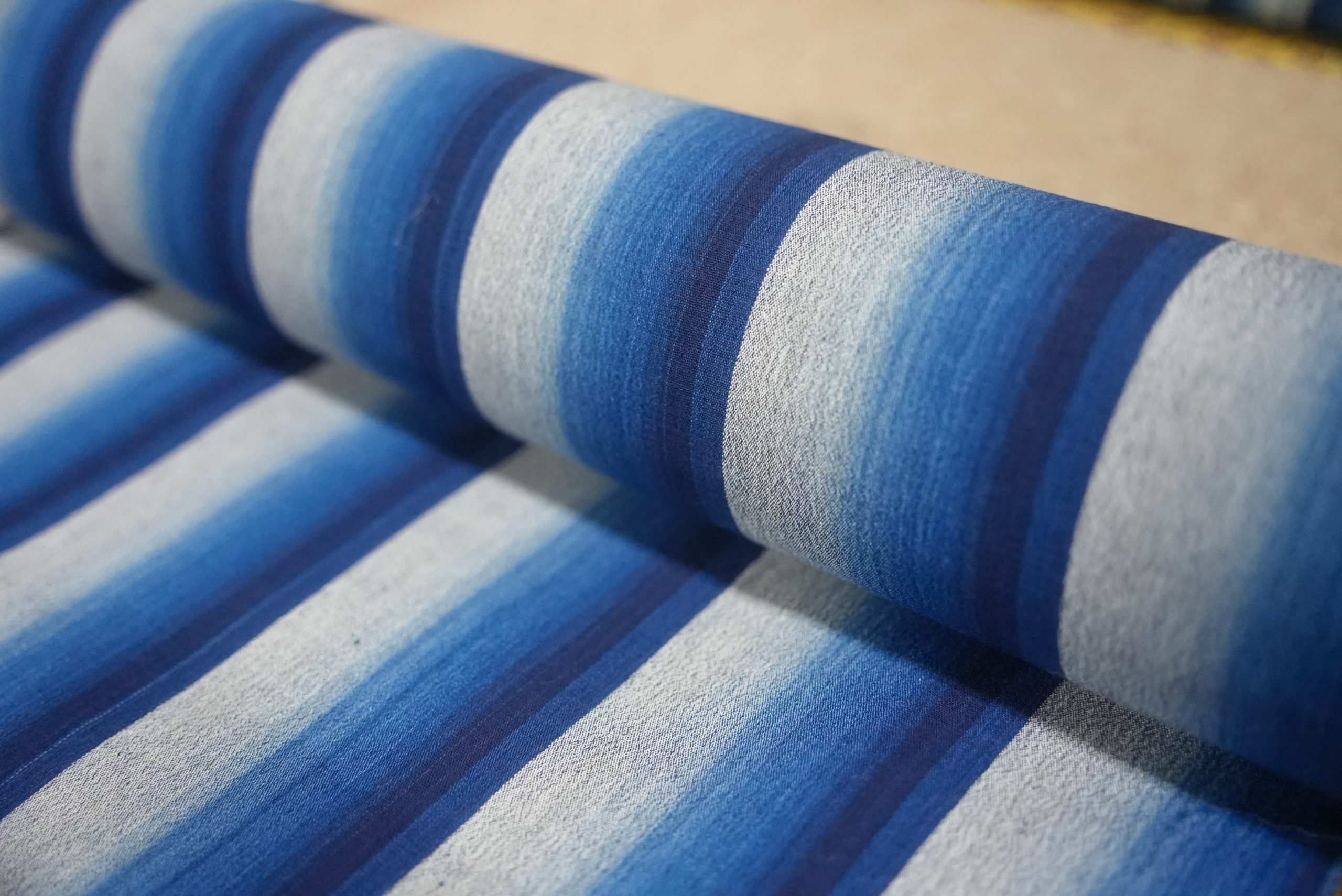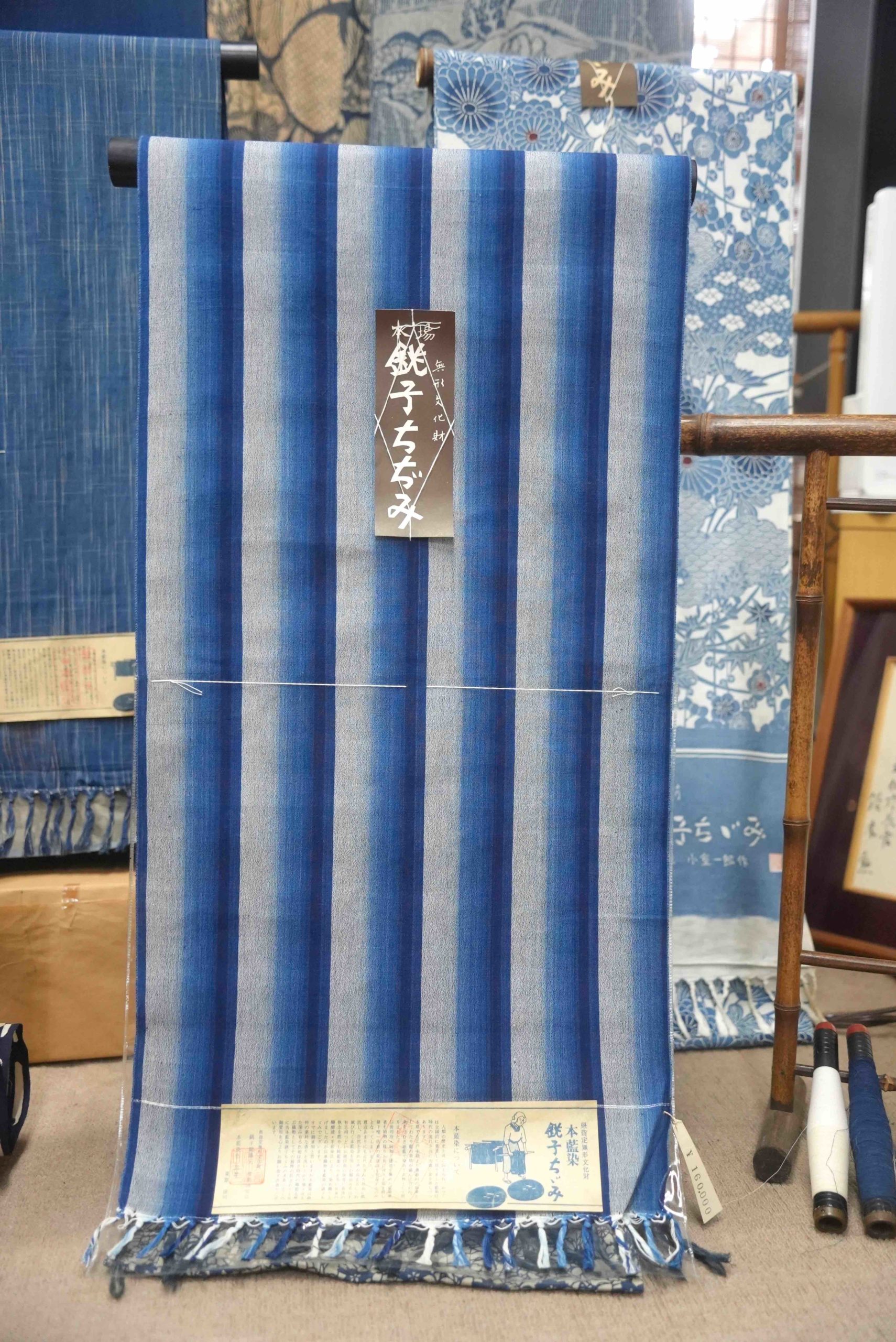銚子ちぢみ
Pronunciation: Choshi-chijimi
Production area: Choshi City, Chiba Prefecture
Choshi-chijimi is a cotton textile known for its striped patterns woven with highly twisted weft yarns. Its origin traces back to Hasaki Chijimi, produced in Hasaki on the opposite bank of the Tone River. By the mid-Edo period, Choshi hosted more than 40 weaving houses and over 100 subcontractors producing this textile.
The unique feature of Choshi-chijimi lies in alternating tightly twisted right-twist and left-twist yarns, fixed with starch and woven into the fabric. After hot-water treatment (yumomi), the twist relaxes, producing a fine crimp (shibo) on the surface. This results in a cool, dry texture and a strong yet lightweight cloth. Its vivid stripes, durability, and refined feel made it extremely popular among iki sophisticates of Edo.
Though production declined after the Meiji era and ceased entirely by the Taishō period, it was revived around 1952 by Shinjiro Tokoyoda, who studied under the few remaining practitioners. Since then, the tradition has been handed down through three generations, with ongoing efforts to develop new products while preserving the original technique.
See also: Kimono-en Instagram – Introduction to Choshi Chijimi


Photo courtesy ofPhoto courtesy of Choshi city



















